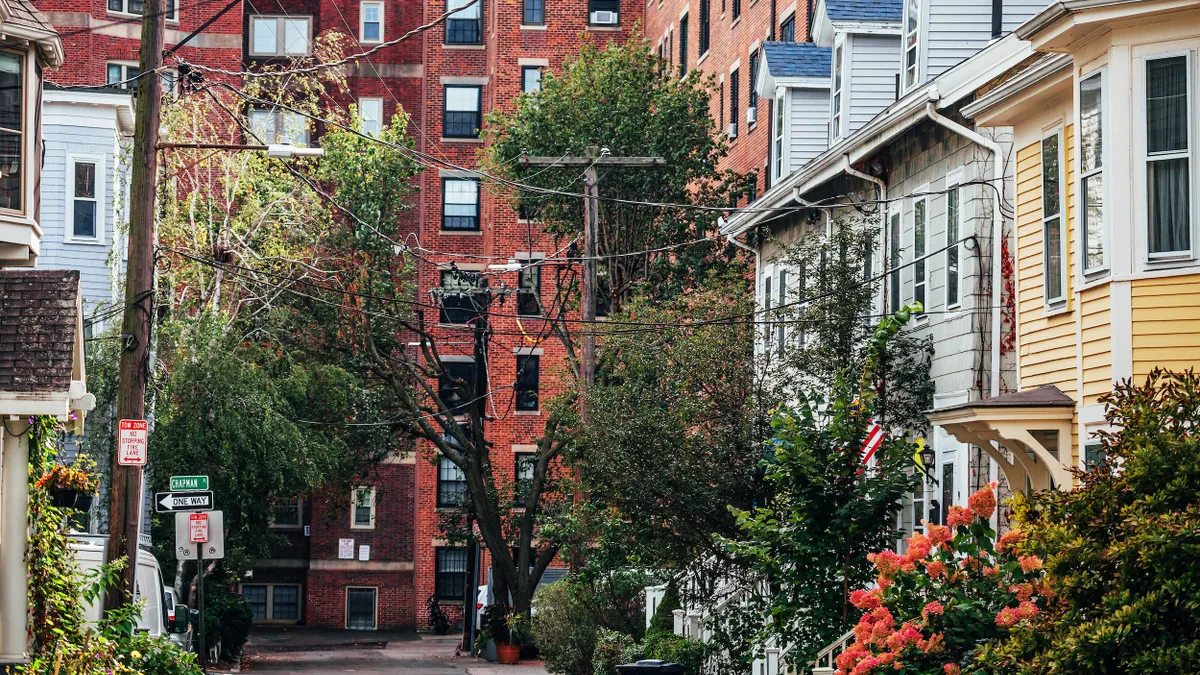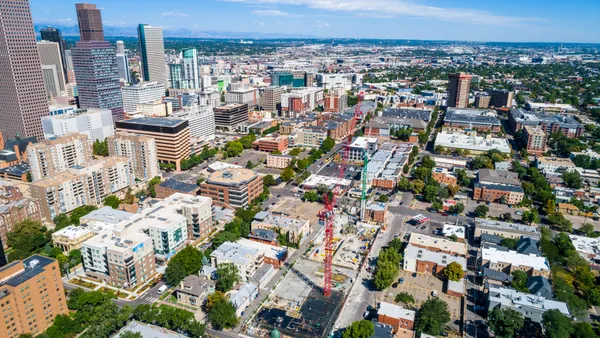Dive Brief:
- Environmental nonprofit CDP released its annual Cities A List on Monday to recognize the efforts of local governments around the globe that are driving transparent and ambitious climate action.
- Despite the unprecedented obstacles of the novel coronavirus pandemic, the 88 cities on the 2020 A List have continued to make progress on environmental action, with 34% of the cities new to the list this year, CDP said. The U.S. saw the most representation with 25 cities (28% of the list). This is a drop from 2019, when the U.S. made up 32% of the A List with 34 cities, though "climate leadership has been against all the odds" this year, said Katie Walsh, director of cities, states and regions at CDP North America.
- CDP's A List is based on environmental data disclosed by hundreds of cities through the CDP-ICLEI Unified Reporting System. To get on the A List, a city must have a citywide emissions inventory, set a reduction target and have both a public climate action plan and climate adaptation plan.
Dive Insight:
The release of this list comes nearly five years to the date of the Paris Agreement's adoption at COP21 in December 2015. Despite President Trump's withdrawal announcement from the agreement in 2017 — and official action to remove the U.S. earlier this month — the CDP detailed significant progress from the 2020 A List cities on the goals of the agreement over the last five years:
- 39% of cities on this list had not disclosed their environmental data through CDP in 2015
- Half of these cities (44 of 88) had not disclosed greenhouse gas (GHG) emissions reduction targets in 2015
- In 2015, only 30% of this year's A List cities had reported resiliency adaption plans
Much of this progress is thanks to commitments made in the "We Are Still In" agreement, signed by a number of local governments, businesses and citizens to drive climate action in the absence of federal support. Some states also signed on to this agreement in an effort to continue climate efforts as detailed under the Paris agreement, though that support is wavering.
"It's not just federal absence. Several of the cities on the list, they're also in states where there isn't necessarily a framework or regulatory environment that is rewarding climate action," Walsh said. She pointed to cities including Miami, Cleveland and Louisville, KY that are "demonstrating what climate leadership looks like" despite little state-level support.
"I think the question is, what is possible when you do have strong federal leadership, and what does that mean for 2021?" she asked. "We know what we need to do ... We have the science straight to show us what has to happen in the next 10 years, and what we need is the policy framework, the targets and the funding to ensure that we can uphold the science."
Questions still looms around President-elect Joe Biden's transition into the White House, though Walsh shared optimism that federal leadership under a Biden administration could unveil regulatory and market opportunities to support the reduction of GHG emissions.
One example of this would be factoring the impacts of climate change into the municipal bond market — a crucial resource funding for cities — to make transformative investment decisions, Walsh said. There's about 50,000 governments and authorities that issue bonds to finance work in the U.S., "so that is a really critical lever to accelerate climate action," she said.
The City of Phoenix's recent bond offering for water infrastructure, for example, included its climate disclosure to emphasize to investors that they're planning for the next 50 to 100 years through aggressive water reduction and wastewater recycling goals, Walsh said.
She also pointed to San Antonio, which has completed 409 energy efficiency projects across nearly 200 municipal facilities from 2011 to 2018, resulting in $1.5 million in avoided costs, CDP reports. In a September webinar, San Antonio Mayor Ron Nirenberg said COVID-19 has made the importance of climate action "abundantly clear," saying the city sees "the social determinants of health through the lens of climate action."
A recent analysis from the TRECH research initiative found climate-focused transportation policies could unlock $11.1 billion in air quality benefits by 2032. These efforts to clean the air will also serve to support communities as a public health benefit amid COVID-19, Walsh said, suggesting climate action amid this civil distress can be a win-win.
The cities on this year's A List are "able to continue to demonstrate their leadership while dealing with the crisis in front of them, whether it's the direct impact from COVID or the economic impacts from COVID," Walsh said.












